Water Cycle: How does water move around the Earth?
8 minute read
Updated on: 29 Apr 2021
Heavy rains, droughts and wildfires: having too much or too little water can be a huge problem - and climate change is set to make these worse. Why? It’s all down to the water cycle.
The water cycle is the movement of water across the planet, from liquid in the ocean and on land, to vapour in the atmosphere, and back .
This cycle is key to understanding how temperature changes are linked to events like droughts and floods .
How does water move around Earth?
At its most basic form, the cycle can be broken down into rain and evaporation :
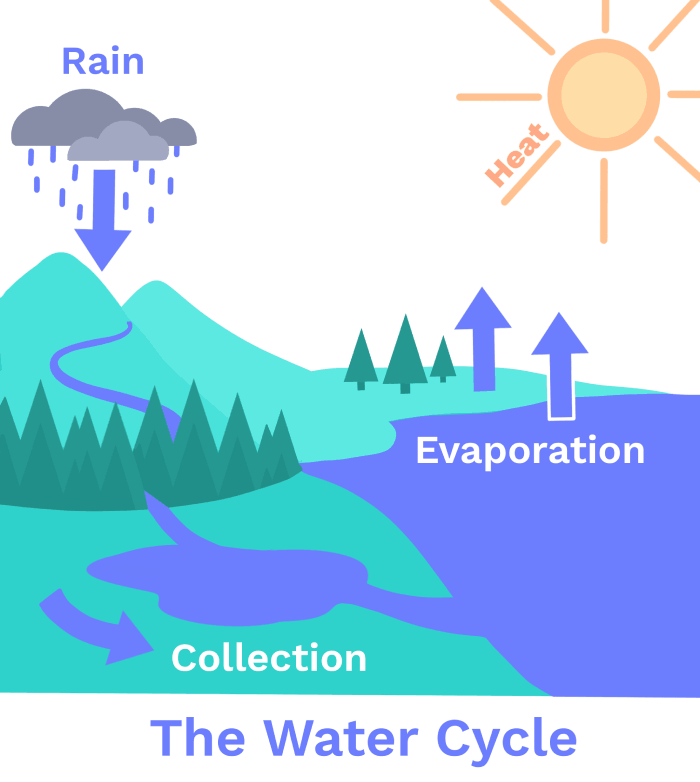
The Water Cycle
Because of the way the Earth curves, the tropics absorb two times more solar energy than other parts of the planet , resulting in more evaporation. Evaporation also depends on there being available water, so most evaporation occurs from the ocean surface rather than on land
.
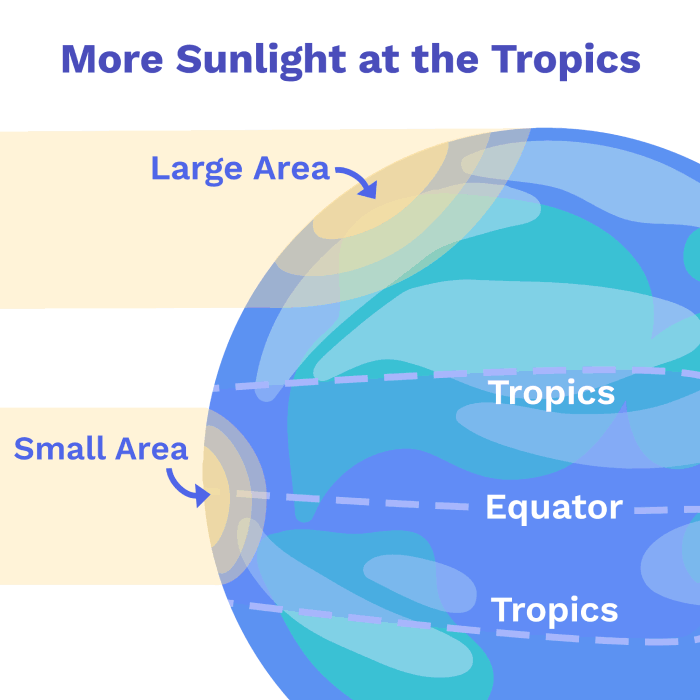
More Sunlight at the Tropics
In fact, 86% of all evaporated water comes from the ocean . This means the top 1.4m of water evaporating from the ocean every year
.
10% of this water falls as rain over land . The three-dimensional movement of air within the atmosphere, known as general circulation, is therefore very important to the water cycle and rain patterns because it redistributes water vapour around the planet
.
Why does global warming matter here?
The temperature at the surface of the planet has a large effect on the evaporation of water . So what happens when we increase Earth’s temperature?
Warmer air holds more water vapour: 7% more for each degree Celsius it warms . This is because at higher temperatures, water molecules on the ground or on the surface of the sea or lakes have more energy, making it easier for them to escape from liquid water and turn into gas in the atmosphere
. Increasing the amount of vapour in the air changes the amount that can fall as rain
.
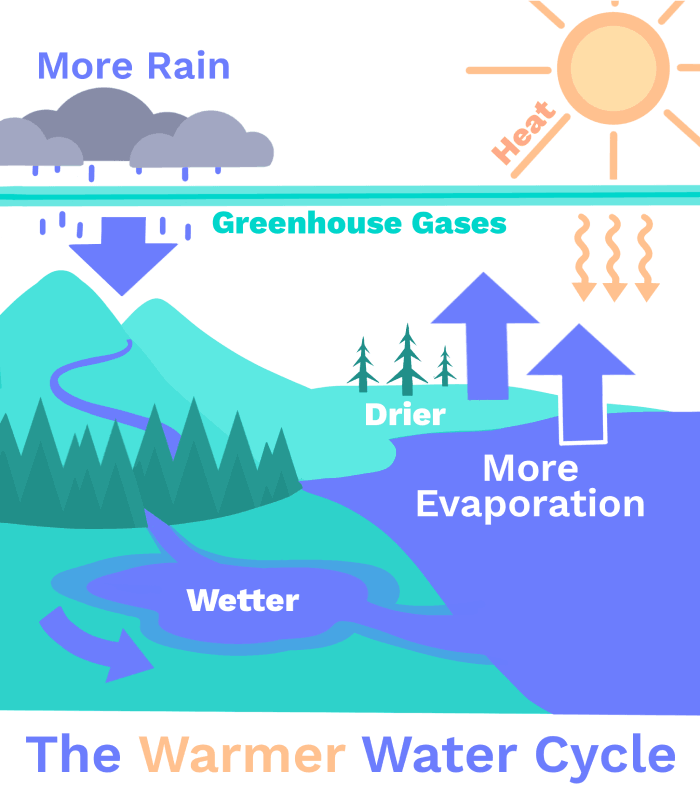
Increasing rain with global warming
Accelerating the rate at which water circulates in and out of the atmosphere is known as an intensification of the water cycle .
How does intensification change rainfall?
Yes, both! The effects vary greatly from place to place . Look at the map below
:
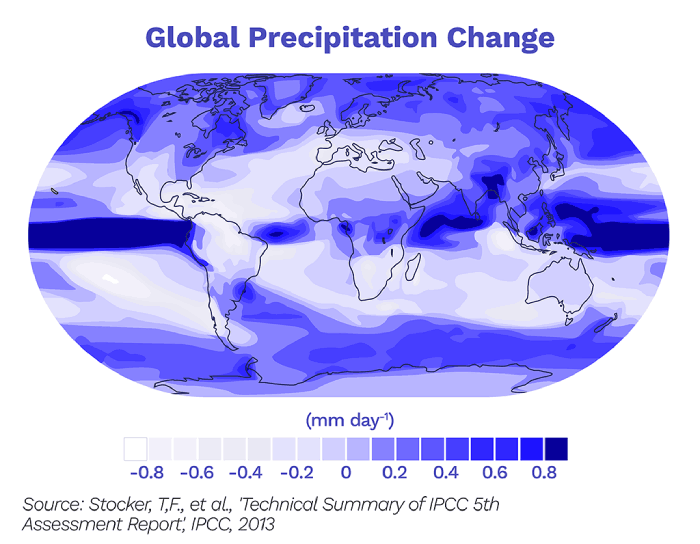
Global Precipitation Change
In general, intensifying the cycle means that wet places get wetter and dry places get dryer . This is partly because the extra water in the atmosphere is concentrated by wind currents to places that are already rainy
.
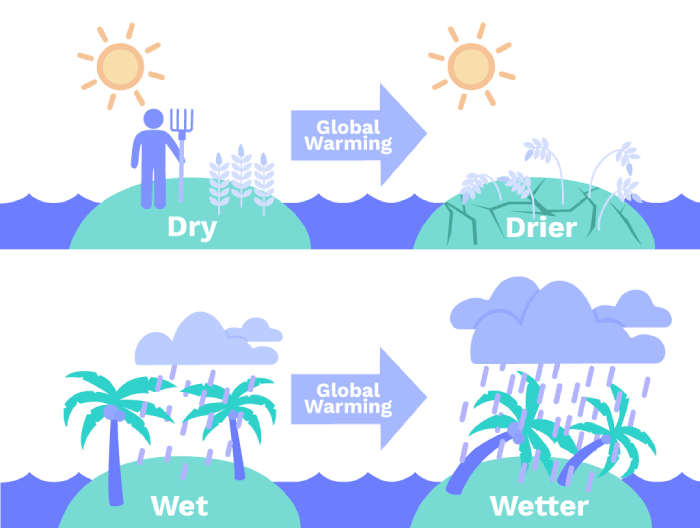
Drier AND wetter
Even less water will be brought to the deserts near the equator and even more will be concentrated in the world’s tropical rainforests .
In addition, some parts of the atmosphere will warm more than others, so they will be able to hold more water
.
As well as the amount of rain that falls every year, it’s important to consider the way this rain falls . Does it rain lightly every day? Or does it rain heavily twice a year? This is called the intensity of the rain event
.
We are seeing heavy rain even in places where overall rainfall is not increasing . This is known as the ‘it never rains but it pours’ syndrome
.
Warming can cause rain to become more intense - increasing the risk of flooding - but less frequent . In the long rainless periods between these heavy rains
, droughts become longer and more severe
.
Imagine if all the water you normally drink in a year was only available to you for one day! You would not be happy, even though you still get the same amount of water per year, right?
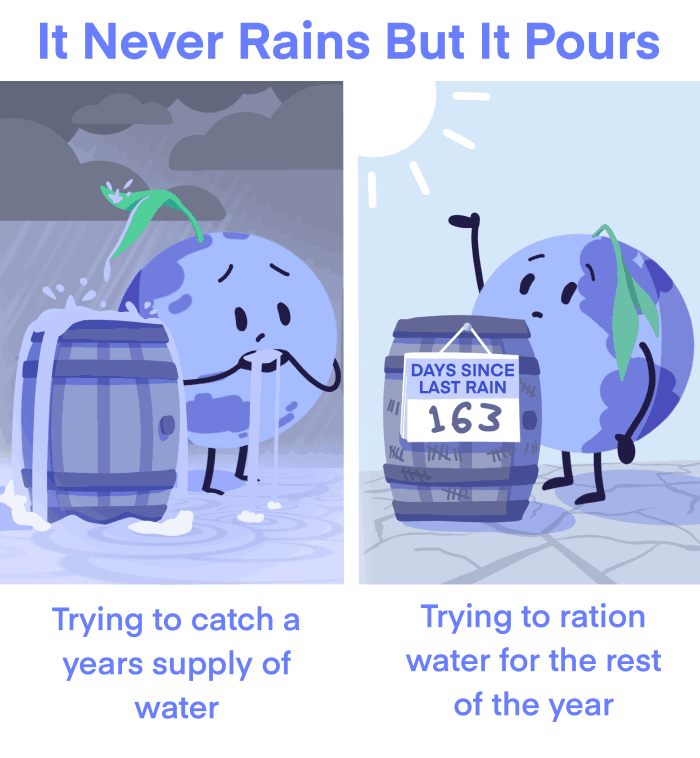
Droughts are also caused by changing wind currents, which redistribute rainfall . Generally wind currents are shifting towards the poles in response to global warming
.
At times, in southern China winds have brought more dry air from the north and less water vapour from tropical oceans, causing intense droughts . Droughts have also become longer and more intense in the Mediterranean and West Africa since 1950
.
Groundwater is replenished by rain. This is called groundwater recharge . Too much rain can fill up the groundwater storage to the point where the extra water results in floods, while the supply shrinks if it doesn’t rain enough
.
If we continue emitting greenhouse gas at the rate we do today, groundwater recharge in dry regions could significantly decrease. Like in the north-east of Brazil, where groundwater recharge is projected to decrease by more than 70% by 2050 . Having a smaller groundwater supply makes droughts even worse
!
Droughts and Fire
We’ve learned that increasing temperatures cause more evaporation. This can cause plants to dry up, forming a fuel source which leads to larger wildfires .
Normally, much of the solar energy an area receives is absorbed by evaporating water on the surface of the Earth. But when there is not enough water in the soil, this energy heats up the dried out plants instead . Dryer, warmer conditions make fires more likely
.
Heatwaves therefore also make wildfires more likely. Almost all parts of the globe have faced an increased number of heatwaves since 1950 , breaking multiple temperature records
.
Models have predicted that climate change could increase the frequency of fires globally by 19% in 2050 relative to 2015, if temperatures reach 1.8°C above pre-industrial levels .
Conclusions
The way water circulates throughout our atmosphere is what makes our Earth so special . It’s clear from this chapter that changes to this circulation need to be taken seriously!
In the next chapter, we will look at the effect of these changes in the tropics.
Next Chapter